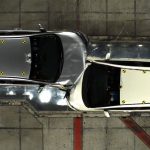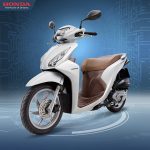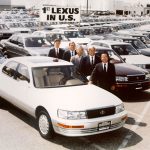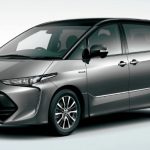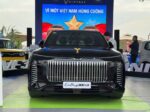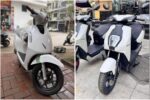Both models are developed based on the dedicated e:N Architecture F platform for Honda’s electric vehicles. However, e:NP2 is produced by the GAC Honda joint venture, while e:NS2 is assembled by the Dongfeng Honda joint venture.
Compared to the concept version unveiled in April this year at the Shanghai Auto Show, the commercial versions of e:NP2 and e:NS2 do not have many differences. Both models also feature similar exterior design details, with minor variations. Specifically, the Honda e:NP2 is equipped with headlights inspired by Renault. With the Honda e:NS2, the headlights and LED daytime running light strip extending from the hood to the front bumper bear a resemblance to the lion fang design found on Peugeot models. Both models have taillights that resemble the headlights.
The interior space of the e:NP2 and e:NS2 has the same design. In the center of the dashboard, there is a 12.8-inch infotainment screen. In addition, both models are equipped with a sporty flat-bottom steering wheel, a digital instrument cluster, and a head-up display. The center control cluster is placed relatively low and is accompanied by shift buttons and an electric parking brake.
Honda has not yet announced the list of equipment and engine specifications for the e:NP2 and e:NS2. However, according to some sources, both models will have a powerful electric drivetrain of 204 horsepower, coupled with a 68.8 kWh battery pack. As a result, the cars can travel about 510 km on a full charge. The company has not disclosed the official prices of the two models yet.
Continuously launching pure electric models is part of Honda’s electrification plan announced last year. According to the plan, the Japanese automaker aims to globally sell only pure electric vehicles and hydrogen fuel cell electric vehicles (FCEVs) by 2040. By 2050, Honda aims to achieve carbon neutrality. In the Chinese market, Honda aims to make all models produced after 2027 hybrid and electric vehicles.
By Thai Son (Tuoitrethudo)

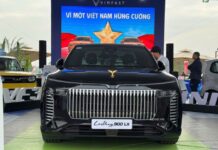

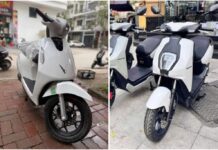
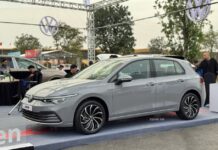




















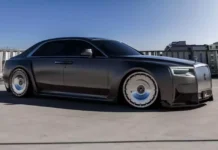




_result.png)
_result.png)
_result.png)
_result.png)
_result.png)
